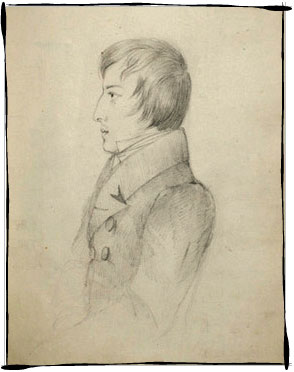



Preludes
These are wholly exceptional compositions
(Liszt)
The variety of moods and impressions contained in the Preludes, Op. 28 is without equal in the whole of world music literature
(Leichtentritt)
These are above all the 24 Preludes, Op. 28, on which Chopin worked in the years 1838–1839, although the ideas for particular preludes probably date from earlier years, possibly even 1831. His work on these pieces proceeded against an extraordinary backdrop and at an important moment in the composer’s life. His relationship with George Sand was in its early months, and in the autumn of 1838, together with Sand’s children Maurice and Solange, the couple travelled to Majorca. They planned their stay on this beautiful island as an idyll, and initially they did indeed lead ‘a most wonderful life’ there, in Chopin's words. The preludes were written at first in a small villa near Palma and then ‘in a curious place’: an old Carthusian monastery in Valldemossa, ‘between rocks and sea’. The romantic idyll ended when the composer fell seriously ill and the beautiful weather gave way to rain and cool temperatures. Work on the preludes was delayed, although the manuscript of the 24 Preludes was still ready in January 1839. In that same year they appeared in print in Paris, London and Leipzig.
The preludes are piano miniatures, among the most beautiful and most important compositions in the Chopin oeuvre. One can point to two traditions to which Chopin referred. The first is Bach's Wohltemperiertes Klavier – two famous sets of 24 preludes and fugues in all the keys. Chopin took a copy of this work with him to Majorca and frequently played the preludes and fugues by his beloved Bach. The other tradition was contemporary to Chopin and involved the practice of ‘preluding’ before a larger-scale work (piano preludes of this sort were published prior to Chopin by Hummel, Kalkbrenner and Moscheles, among others). But in truth the 24 Preludes, Op. 28 are a wholly unique phenomenon, and still give rise to a variety of opinions and commentaries.
Chopin's preludes do not serve as introductions; they are artistically autonomous, free-standing works. They can be performed individually or in groups, losing nothing of their powerful effect on the listener, but only together do they form a great and fascinating cycle of twenty-four works. It is a cycle that was precisely thought through, with the compositions passing successively through all the keys (around the circle of fifths, and so differently to the Bach cycles). In addition, a common melodic motif can be followed in many of the preludes, which further enhances the organic unity of the set.
A key role in the cycle is played by contrast: we witness a microcosm of changing moods, emotions, expressions, tempo, melody, rhythm, dynamics and colours. The kaleidoscopically shifting narrative is marked by a distinct dramaturgy-the listener ‘journeys’ through successive works and keys, from the brief C major Prelude that opens the set to the dramatic climax in the last Prelude in D minor. Here, remarkably short miniatures, such as the charming sixteen-bar A major Prelude or the agitated E flat minor Prelude, rub shoulders with lengthier compositions, such as the famous D flat major, traditionally known as the ‘Raindrop’ Prelude. Among the most beautiful interpretations of the cycle are the recordings by Alfred Cortot, Maurizio Pollini and Martha Argerich.
In 1841, Chopin composed the single, wonderful Prelude in C sharp minor, Op. 45. Here we witness again the composer's genius-in the refined sound and the wealth of harmonic planes in this ‘well modulated’ work, as the composer himself described it. The name ‘prelude’ is also usually applied to the short Presto con leggierezza, from 1834 (Prelude in A flat major) – a composition of lesser weight and not published by Chopin; it only appeared in print in 1918.
Artur Bielecki (NIFC)
Prelude in C sharp minor Op. 28 No. 10
The Prelude in C sharp minor, the tenth in the cycle, brings the return of airy, light, scherzotic music. It resembles a sketch or a request for a concept that would only be fully realised in the C sharp minor Scherzo, based on a similar kind of opposition. It is characterised by a quick tempo and chromaticised figuration; its tone is powerfully expressive, and even effervescent.
Author: Mieczysław Tomaszewski (NIFC)

